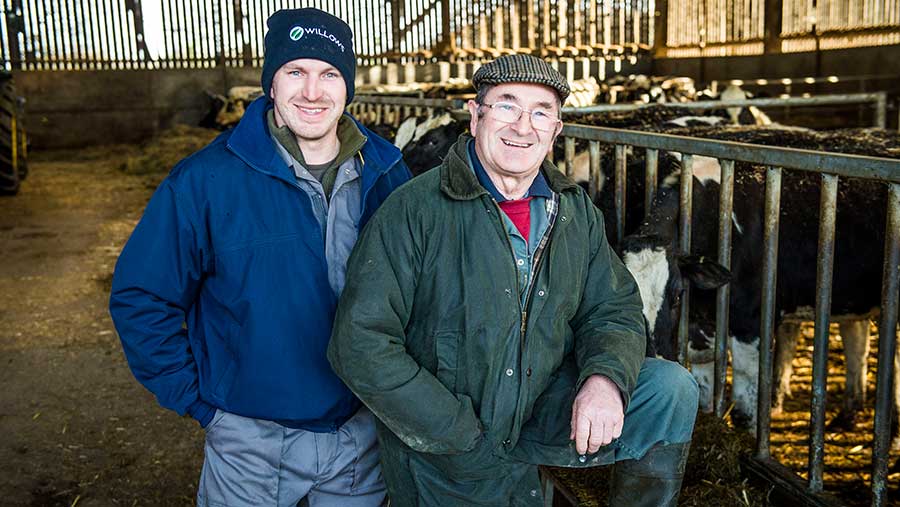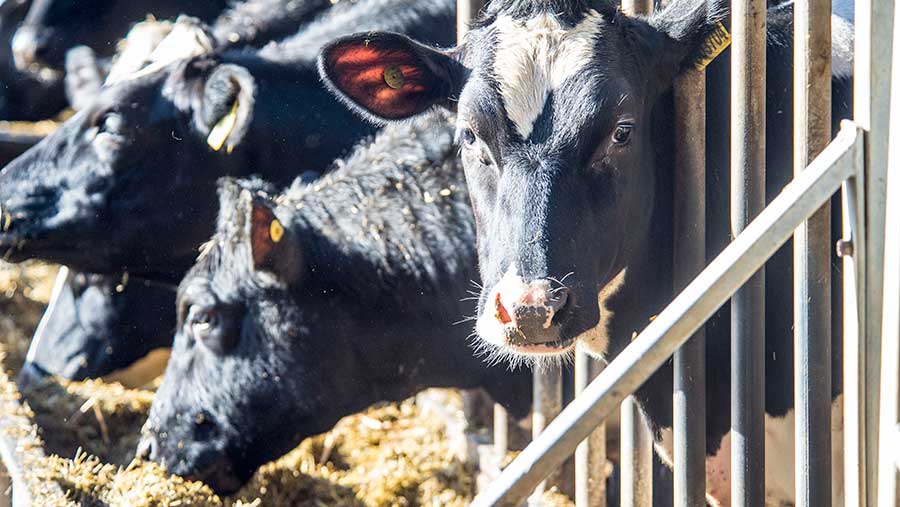Rethinking cattle performance: Cheshire heifer rearer upscales production tenfold
 © BillyPix
© BillyPix Close attention to weight gain and calf hygiene is ensuring the heifer-rearing business of Alan and Rick Ford meets customer requirements and growth rates of 0.7-0.8kg/day.
Former dairy farmers, the Fords of New Farm, Northwich, last sold milk to Dairy Farmers of Britain in 2006 and over the past 10 years have grown their heifer-rearing business from 30-40 calves to a summer capacity of 550 head.
Plans are now afoot to expand by a further 100 heifers, taking overall numbers to a summer figure of 650 head, explains son Rick.
“Our costs are effected hugely by the length of the grazing season,” he says. “We see a much better margin from an early turnout and a good autumn.”
See also: Make heifer rearing savings with improved online calculator
Farm facts
New Farm, Northwich, Cheshire
- Tenanted farm on Arley Estate renting a total of 202ha
- 30ha oats, wheat and barley grown at home
- Raising Holstein-Friesians and Friesians
- Farm has a semen straw flask and undertakes AI work
- Contracts are worked out at a flat weekly rate for three farms
- Holstein-Friesians served at 350kg, Friesians at 320kg
- Winter capacity of 530 heifers
- Former dairy farm last sold milk in 2006
- Small number of heifers produced for farm’s own private sale
A good start
Calves entering the farm at six- to eight-weeks old receive a ration mixed at 2kg of nuts to 1kg of rolled cereal that is fed at a rate of 2.5-3kg a head a day with haylage and eventually reduced to nothing by eight to nine months of age, by which point haylage is replaced with chopped silage.
Calf pens are limed and rested in between batches and steam cleaned three to four times a year with hypochlorite solution.
See also: Watch the video on how to use a refractometer to test colostrum quality
“Youngstock health starts from the moment the calves are born,” says Rick. “The job we do depends on the job of the customer with their newborn calves before they even reach us.
“If there are things to concentrate on I would say its colostrum, vaccinations and keeping stress-free animals.”
Chopped silage grows heifers from 200kg to bulling weights of 320kg or 350kg, at which point mineralised protein licks (16% crude protein) are provided.
Silage is clamped and analysed, cut slightly later (nearer heading date) and chopped slightly longer (35-40mm) than for a dairy herd to provide dietary fibre.

© BillyPix
Weights
Target bulling weights require heifers to add 250kg at New Farm at a rate of 0.7kg/day to be served at 13-15 months old. Higher-performing animals will do 0.8kg/day or more and continue adding 0.7-0.8kg after bulling.
Conception rates at first service hover about 75% for the block-calving heifers and conventional semen and 60-65% for sexed semen heifers. Heifers calve down at 22-26 months of age.
All calves are weighed every four to six weeks, with corn rations and silage introduction adjusted according to silage quality and body condition.
Vaccinations
All calves get Rispoval 4 for bovine viral diarrhoea (BVD), leptospirosis, infectious bovine rhinotracheitis and parainfluenza type 3 at eight- to 10-weeks old and a follow-up vaccination four weeks later.
BVD, leptospirosis, and lungworm vaccinations are administered pre-turnout across two doses four weeks apart. First-time grazers receive a bolus wormer and second-time grazers get a vaccine booster.
Sponsors’ message
Thanks to ABP, Zoetis and Volac, whose sponsorship made it possible to run this Rethinking Cattle Performance workshop. Farmers Weekly had full editorial control of this article.
“ABP, Volac and Zoetis are committed to supporting UK cattle farmers in running enterprises that produce healthier, more productive animals.
Part of this commitment means working with organisations such as Farmers Weekly on initiatives such as the ‘Rethinking Cattle Performance’ campaign, to offer farmers the opportunity to learn from experts and their peers about the best ways to produce cattle, and particularly calves, as efficiently as possible.
Find an event near you
Farmers Weekly is running two more Rethinking Cattle Performance workshops. Find out more on the Rethinking Cattle Performance website.
